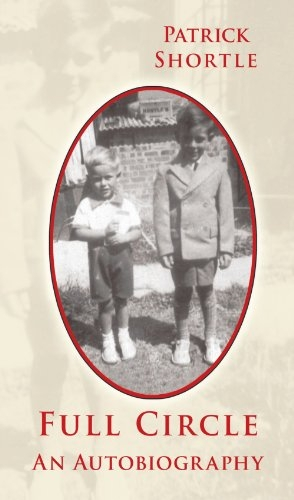Full Circle
From his childhood in a town known as the “Garden of England” to his days as a race car driver, Patrick Shortle shares his memories spanning a sixty-year period.
Full Circle is an autobiography with a great deal of detail about life in post-World War II England. Shortle describes a childhood in which children get excited about bonfires, play freely in the woods, and are oblivious to adult concerns. As he grows up in the 1950s, he comes to appreciate the hard work of his mother, who raises Shortle and his brother on her own and gives him enough stability to start his own family at a young age.
That strong parental foundation also enables Shortle to explore different career options, including an early stint in a butcher shop and his eventual focus on racing. He experiences life “full circle” around the track, becoming a fixture in the industry and guiding the careers of those who come after him. Shortle proves adept at laying out the events of his life, honing in on significant changes and minor occurrences alike.
Although his tale can be charming, Shortle’s writing style presents a few challenges. He provides a chronological history of his life without articulating his reasons for sharing his story or including many glimpses of his emotional landscape. Most chapters contain the facts of his personal history but lack interpretations of events and how they may have influenced his later life. Shortle does describe his reactions, such as excitement or nervousness, but does not delve much beyond these surface emotions. For example, he writes, “I was in quite a mess for a few months, the doctor put me on happy pills, which calmed me down.” Here Shortle misses an opportunity to fully consider the situation, explain why it occurred, and describe how it felt to seek recovery.
Another difficulty that ends up being a significant issue in the text is Shortle’s frequent, inaccurate capitalization. He randomly capitalizes words that aren’t proper nouns, a tendency that has the potential to confuse readers. For example, he states that a development was “nestled between Apple trees,” and that he ran to tell his mother that “there was a Man at the door.” Quite often, such grammatical misfires jolt readers out of the story as they try to decide whether the capitalized word is a reference to a specific place or a formal title.
Aside from these challenges, Shortle provides an interesting look at England’s postwar recovery as experienced by one family. His extensive descriptions of racing will be invaluable to enthusiasts interested in the sport’s history.
Reviewed by
Elizabeth Millard
Disclosure: This article is not an endorsement, but a review. The publisher of this book provided free copies of the book and paid a small fee to have their book reviewed by a professional reviewer. Foreword Reviews and Clarion Reviews make no guarantee that the publisher will receive a positive review. Foreword Magazine, Inc. is disclosing this in accordance with the Federal Trade Commission’s 16 CFR, Part 255.

